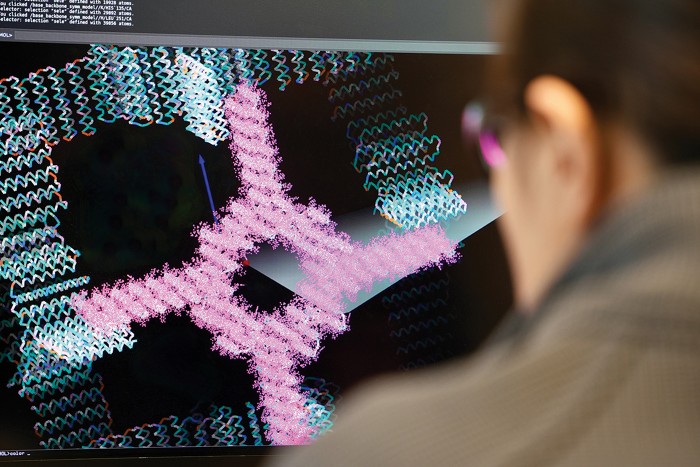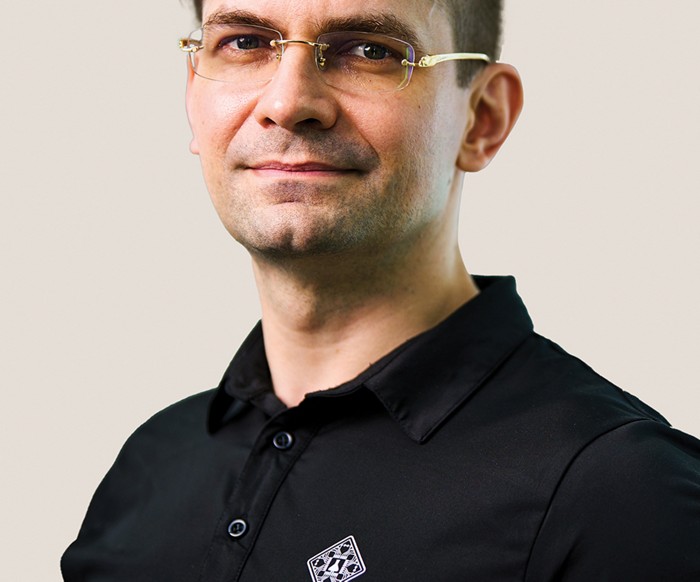Advertisement
Grab your lab coat. Let's get started
Welcome!
Welcome!
Create an account below to get 6 C&EN articles per month, receive newsletters and more - all free.
It seems this is your first time logging in online. Please enter the following information to continue.
As an ACS member you automatically get access to this site. All we need is few more details to create your reading experience.
Not you? Sign in with a different account.
Not you? Sign in with a different account.
ERROR 1
ERROR 1
ERROR 2
ERROR 2
ERROR 2
ERROR 2
ERROR 2
Password and Confirm password must match.
If you have an ACS member number, please enter it here so we can link this account to your membership. (optional)
ERROR 2
ACS values your privacy. By submitting your information, you are gaining access to C&EN and subscribing to our weekly newsletter. We use the information you provide to make your reading experience better, and we will never sell your data to third party members.
Physical Chemistry
Of Culture And Chemistry
Examining how knowledge of the elements has become part of the cultural fabric the world over
by Sam Lemonick
May 2, 2011
| A version of this story appeared in
Volume 89, Issue 18

Like many people who have studied chemistry, I love the periodic table—its order and logic, the information it intrinsically conveys. Hugh Aldersey-Williams, author of “Periodic Tales: A Cultural History of the Elements, from Arsenic to Zinc,” has a similar infatuation, starting when he was in grade school when he went so far as to make a version of the table complete with samples of the elements he was able to collect or buy.
His book frees the elements from the rigid confinement of the periodic table and shows us where they end up in our culture: in machinery, jewelry, and the pages of literature, to give a few examples. The author mixes stories of science and culture until the two are indistinguishable, which seems to be his point. “Periodic Tales” shows us how much we rely on the elements as cultural signifiers of wealth, strength, beauty, or novelty.
For the most part each chapter of the book charts the story of one element (although the noble gases are treated as a whole), but there’s no apparent formula for what anecdotes Aldersey-Williams includes. The discovery of a given element features prominently in many chapters while art, literature, or design related to the element is the focus of others. Rejecting the orderliness of the periodic table, Aldersey-Williams plots a meandering, hopscotch course through the elements and chooses his stories with similar whimsy.

His goal is to show the forms chemistry takes beyond the laboratory. As he laments near the end of the book, in our world, “chemicals are things to be feared, the necessary ones kept in their place under the kitchen sink.” Yet on the contrary, he argues, the chemical elements are not only vital to life but to culture.
“Periodic Tales” is sure to be compared to Sam Kean’s best-selling book “The Disappearing Spoon: And Other True Tales of Madness, Love, and the History of the World from the Periodic Table of the Elements,” which also uses the elements as a starting point for storytelling. There is plenty of overlap between the two books, and many of the same anecdotes appear in both. But while their subject matter is the same, their focuses are different. Kean’s book is much more a scientific history than Aldersey-Williams’, which likely features as many artists and poets as it does scientists.
Although “The Disappearing Spoon” may have more cocktail party mileage, “Pe riodic Tales” helps the reader take a serious look at how chemistry impacts the world.
Everyone is familiar, for instance, with atomic number 24, chromium, in the form of the gleaming chrome that adorned everything modern, from cars to pencil sharpeners, in the middle of the 20th century. The properties of chrome—in particular the bright, blue-white light it reflects—made it symbolic, Aldersey-Williams says, of “the booming consumer society. It radiated modernity, glamour, excitement and speed.” As the economy slowed and public opinion shifted in the second half of the last century, chrome came to be associated with gaudiness and overindulgence, and chromium took on a new cultural meaning, even if its use in the lab never changed.
Aldersey-Williams shows us how much the elements have seeped into the popular consciousness, something many chemists often overlook. Central to his argument is the way an element’s properties give it cultural meaning. Aldersey-Williams takes the metals that different cultures have used in jewelry as an example: gold, silver, platinum, and other more surprising metals, such as titanium and aluminum. Which metal is deemed most precious has varied considerably throughout history, with some cultures prizing rarity, others workability, and still others color or luster. “Periodic Tales” helps its readers, both scientists and nonscientists, organize the elements according to their cultural values, not just number of protons.
The book also makes it clear how much culture has informed chemistry. In one of the final chapters, Aldersey-Williams explains how two elements—hassium, named for the Hessian state that preceded modern Germany, and darmstadtium, named for the German town where the element was discovered at the Institute for Heavy Ion Research—were given such nationalistic names. The naming body, the International Union of Pure & Applied Chemistry, thought these element names should be a counterweight to the names of two elements discovered at the University of California, Berkeley, in the 1940s: berkelium and americium.
Chemists will be pleased to find plenty of elemental trivia in the book. For example, the author points out that euro notes use the rare-earth metal europium in their anticounterfeiting phosphorescent strips. He pulls from the archives the fact that phosphorus was originally isolated from dozens of pails of urine (an experiment that can be repeated today, which the author says he has done). Aldersey-Williams is especially fascinated by nomenclature, clearing up such curiosities as the similarity of the names yttrium, ytterbium, terbium, and erbium. All were discovered in mines in Ytterby, Sweden.
For lay readers of the book, there are good explanations of the science of chemistry. Spectroscopy figures heavily in many of the stories of discovery, and Aldersey-Williams does a decent job of explaining how spectroscopy works and how it is used in a laboratory. A chapter on some of the synthetic elements has an accessible description of how the most unstable elements are made and detected, and elsewhere he explains why heavy metals are health hazards.
In places, readers might want more chemistry and physics than the author provides. His explanation of the relationships between gold, silver, and platinum, for instance, is interesting and well described but lacks deeper discussion of the chemical differences. Aldersey-Williams addresses their arrangement on the periodic table and the chemical similarities that that indicates, but he does not explain how their atomic structure affects their properties. Ultimately, however, that’s not what this book is about. “Periodic Tales” is a study of culture more than chemistry.
Other frustrations can’t be explained away so easily. The chapter on aluminum, for instance, fails to mention sapphire, an oxide of the metal. Confusingly, the chapter “Abbé Suger’s Sheet Sapphire,” named after the stained-glass windows of a church in France whose blue color comes from cobalt, has nothing to do with the gemstone which gets it color from titanium and iron impurities. Aldersey-Williams picks a particular narrative for aluminum, a rise and fall from expensive wonder metal—it caps the Washington Monument—to hamburger wrapper. The gem doesn’t fit in that arc but still seems like an important part of aluminum’s cultural story. It’s a small but confusing omission.
More puzzling is the author’s complete omission of several elements important to modern chemistry. Silicon, indisputably part of today’s culture, somehow didn’t make the cut. But that’s nothing compared with the outrageous absence of hydrogen, mentioned as little more than a counterpart to oxygen in water and combustion. Hydrogen bombs, hydrogen fuel cells, hydrogen-filled zeppelins—it seems like hydrogen figures into our culture enough to get its own chapter. Maybe Aldersey-Williams thought it lacked the proper gravitas.
It’s worth warning readers that the cultural emphasis may be a turnoff for some. Aldersey-Williams waxes more than a little poetic in some places, going so far as to anthropomorphize tin as “compliant and cheap but nevertheless fundamentally honest and decent.” His impressive literary knowledge can lead to long strings of references that bog the text down. Still, he shows us that many artists and writers have and had a deep appreciation for chemistry, like the English poet Samuel Taylor Coleridge’s knowledge of spectroscopy.
There is no doubt that chemistry has saved—and destroyed—many lives in its roles everywhere from hospitals to battlefields. It goes without saying that it is fundamental to the biological processes that give us life. Aldersey-Williams’ important message is that the elements serve more than a physical function. As he says, “I have been concerned throughout this book to suggest that we are familiar with many of the elements in a cultural way, that is to say without ever stepping in a laboratory.”
He largely succeeds in doing so. Despite the book’s flaws, the reader of “Periodic Tales” cannot help but take a second look at his or her surroundings and appreciate how much meaning we have attached to various elements and how large a role they play in both our physical and cultural environments.




Join the conversation
Contact the reporter
Submit a Letter to the Editor for publication
Engage with us on Twitter